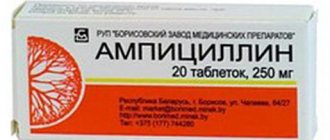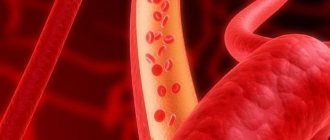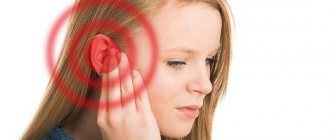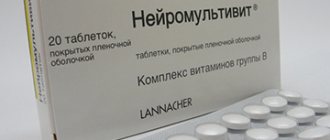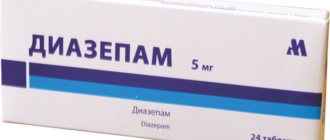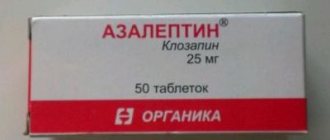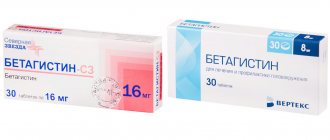Opium
This is the name given to the arousal and feeling of intrusion we experience when we exchange gazes with someone. Eye-to-eye contact creates a surge of energy. But the interpretation of this experience depends on the circumstances. If we perceive another as a threat, it will be unpleasant. And if two people feel mutual sympathy, then this look will bring pleasure.
Deja vu
This feeling is familiar to almost everyone: as if we had been here before or as if the same event were repeating for the second time. Psychologists who study memory believe that the reason is that our past experiences seem similar in some ways to our current experiences. About 75% of people report experiencing déjà vu.
Why do people hallucinate
There are many reasons why a person has imaginary images that do not correspond to reality. These include:
- mental illnesses – schizophrenia, alcoholic psychosis, epilepsy, paranoia and others;
- somatic pathologies – neoplasms, brain damage;
- infections - meningitis, encephalitis, cerebral syphilis, severe vascular and heart diseases, intoxication;
- taking drugs that affect the central nervous system: drugs, alcohol, medications, as well as the use of certain plants and mushrooms that have a toxic effect on the brain;
- chronic stress and lack of sleep.
Hallucinations can affect all senses, with patients being able to hear voices or sounds, or see people or animals that do not exist.
Most often, illusions arise under the influence of serious diseases affecting the brain . However, sometimes illusory effects can appear due to a lack of sleep for more than 2 days, after operations, during depression, during menopause in women and during puberty in adolescents.
Substances that cause imaginary images
Some people seek to escape reality purposefully by ingesting chemicals or narcotic compounds. One well-known psychedelic drug is lysergic acid diethylamide, known as LSD .
In addition, some synthetic compounds and plants containing alkaloids have a hallucinogenic effect:
- PCP, Angel Dust or PCP;
- cocaine is a drug in the form of a powder or paste that is obtained from coca, which grows in South America and Africa;
- opium is a narcotic drug obtained from poppy seeds;
- heroin – a morphine derivative in powder form;
- psychedelics – marijuana, anasha, hashish, synthesized from hemp;
- ecstasy, MDMA or methylenedioxymethamphetamine - an amphetamine that has become part of street culture;
- salvia (predictor sage) is a plant that can be found in the forests of Mexico;
- peyote is a hallucinogenic cactus;
- poisonous mushroom Psilotsibum;
- Ayahuasca is a decoction made from a vine;
- iboga plant native to Africa.
To provoke hallucinations, it is enough to eat mushrooms that cause clouding of consciousness, for example, toadstool or fly agaric . Some plants - belladonna and datura - also have hallucinogenic properties.
Drugs and alcoholic drinks taken in large doses, as well as an overdose of certain medications, can cause a disturbance in the perception of reality.
What medications cause hallucinations?
Some medications used in psychiatry, dentistry, surgery and other fields of medicine can provoke hallucinogenic effects.
A well-known psychedelic drug is nitrous oxide - “laughing gas”, which is used in dental treatment. Inhalation of a large volume of this substance can provoke a short-term onset of hallucinations.
Other medications that may cause hallucinations include:
- analgesics of narcotic and non-narcotic origin: Indomethacin, Ketamine, Morphine, Pentazocine, as well as salicylates;
- antibacterial drugs - Acyclovir, Amantadine, Amphotericin, Chloroquine, Benzylpenicillin and others;
- antihistamines - Suprastin, Tavegil;
- anticonvulsants – Susilep, Hexamidine;
- some drugs prescribed by doctors to treat Parkinson's disease also have a hallucinogenic effect, for example, Levodopa, Bromocriptine, Carbidopa;
- if the dosage is exceeded, ordinary nasal drops - Ephedrine, Nazol - can cause impairment of consciousness;
- antidepressants – Amitriptyline, Trazodone;
- cardiotropic drugs, for example, Lidocaine, Digoxin, Novocainamide;
- Clonidine, Dopegit, Inderal, Propranolol - such solutions and tablets cause hallucinations in the treatment of hypertension;
- tranquilizers – Triazolam, Diazepam, Relanium;
- steroid substances – Prednisolone, Dexamethasone.
The most dangerous substances
Among the most dangerous pharmaceutical drugs that cause hallucinogenic effects and addiction are drugs containing:
Opioid drugs pose a particular danger:
Stimulants that help elevate mood and increase energy, such as cocaine, as well as medications with morphine sulfate, fentanyl, and methadone, can cause great harm to the body.
The list of pharmaceutical drugs includes codeine-containing drugs that cause powerful physical and psychological addiction:
- cofex;
- Nurofen Plus;
- sedalgin;
- solpadeine;
- terpincode;
- codeterpin;
- pentalgin N;
- sedal M and others.
Dependence on these drugs is a serious disease and requires serious treatment . In addition, if used uncontrolled, the following drugs can cause glitches:
- Lyrica is a drug for people suffering from epilepsy. Has properties similar to opioids;
- Tropicamide - available in the form of eye drops. Can cause a hallucinogenic effect and fainting;
- tramadol is taken for pain relief by patients suffering from malignant neoplasms;
- psychedelic drugs containing dextromethorphan (Tussin+, Glycodin, Atussin);
- muscle relaxant Baclofen, anticholinergics Parkopan, Taren;
- mescaline, dimethyltryptamine and psilocin do not cause strong psychological and physiological dependence, but are very dangerous for the brain. They often cause disturbances in perception, psychosis and decreased intelligence.
The most popular drugs are the opioid group, including codeine, ephedrine and tramadol, as well as tranquilizers with a sedative effect.
Available narcotic drugs in pharmacies
Pharmacy drugs are pharmacological products that have powerful sedative and analgesic activity. Such drugs initiate addiction when used for purposes other than their intended purpose. Medicines with narcotic compounds are available in any pharmacy where they are sold without a prescription. Drugs of this kind are preferred by experienced opium addicts, dependent people, and young people.
The danger of drug addiction
Drugs supplied from pharmacies have been “killing” people since the 90s, when the illegal sale of drugs began to develop. Measures to combat the pharmaceutical drug business are not yielding results: mortality rates are not falling.
Prescription drugs are also sold via the Internet, which complicates the control procedure.
Pharmacy chains supply drugs without requiring a prescription. If the instructions for use are violated, life-threatening complications are recorded that provoke new pathologies and addiction.
Medicines containing narcotic substances are differentiated into three control groups of drugs:
- First group. The medicine is issued only after checking the authenticity of the prescription by calling a medical institution.
- Second group. The medicine is dispensed according to a doctor's prescription.
- Third group. Over-the-counter products.
This is the official scheme for the functioning of pharmacies, which is ignored by many pharmaceutical companies. Drug addicts bring huge income to the pharmacy business by wanting to legally purchase drugs. Pharmacists contribute to the growth of the number of drug addicts.
Effects of hallucinogenic drugs
Sometimes the visions and images of a drug addict are quite harmless, but they can also be dangerous. At the same time, voices appear in a person’s head, ordering him to perform any aggressive actions or actions. In addition, taking hallucinogens can lead to severe poisoning and death .
Hallucinations from pills can manifest as:
- imaginary voices and non-existent objects;
- distorted perception of taste and smell;
- sensations of touches that are not there.
Long-term use of hallucinogens can cause the patient to:
- convulsions;
- disorientation in time and environment;
- falling into a coma and a state of delirium.
Exceeding the dosage leads to depression of a person’s psycho-emotional state. The most dangerous drugs are those that stimulate the central nervous system - amphetamine and cocaine . In case of overdose, they cause a strong hallucinogenic effect, overexcitation and psychosis.
Uncontrolled use of psychedelic substances often causes coma, arrhythmia, and death.
Some interesting practices
There is also the famous illusion of Aristotle: if you simultaneously touch the tip of your nose with your crossed index and middle fingers with your eyes closed, the illusion of its enlargement will arise. A similar method of “enlarging” the nose is called “Pinocchio,” where two people sit on chairs. One is behind the other with his eyes closed. If a blindfolded person touches his nose and the nose of his partner with the index and middle finger of his left and right hand, it will begin to seem to him that his own nose has become really long.
Our brain is a complex and amazing tool that allows us to motivate ourselves and create the right images at the right time. It is important to understand that any technique must be performed correctly, and simply stubborn concentration on the result will hinder the implementation of the technique.
A person’s desire to escape from the daily routine forced him to discover drugs - chemical compounds that distort the perception of reality, provoking various visions and sounds that actually do not exist. Hallucinogenic drugs sold in modern pharmacies are very popular among teenagers. Such drugs contain substances that can put the patient in a state of euphoria and cause hallucinations. However, these drugs are by no means harmless and can be highly addictive.
Consequences
Hallucinogenic drugs are often purchased by drug addicts for their further synthesis with other harmful substances. By combining substances with chemicals, a person turns them into poison, which can destroy him in a few years. The most popular drugs are Desomorphine, Koldakt, Vint.
A drug addict can develop an addiction very quickly . A strong craving to get pleasure and eliminate bad health forces him to use hallucinogens. During so-called withdrawal, a drug addict experiences the following symptoms:
- fever or chills;
- panic attacks;
- tendency to diarrhea;
- lacrimation, nasal discharge;
- abdominal cramps;
- excessive sweating;
- attacks of nausea and vomiting;
- confusion;
- sleep disturbance or drowsiness;
- deterioration of coordination;
- restless behavior, anxiety, depression, irritability.
Systematic intake of a hallucinogen causes the brain to gradually adapt to it, and the body’s addiction leads to the need to increase the dose.
Hallucinogenic substances can be persistently addictive. Moreover, psychological dependence is usually stronger than physical dependence.
In addition, regular use of drugs entails severe damage to the central nervous system, a mental disorder that is expressed by symptoms similar to schizophrenia . This is especially pronounced in old age: older people are more prone to accidents and injuries under the influence of drugs.
Drugs have a negative impact on overall health and can destroy the liver and brain. The likelihood of developing dependence increases several times when using drugs in high doses, combining them with alcohol and painkillers.
A hallucination is an image that occurs as a result of an error in the perception process of one or more senses.
Such an image exists only in the head and has no connection with reality (external stimulus), but at the same time it can have a sensual coloring and be very convincing.
Alcoholic epilepsy - what is it and how to treat it? Find out about this from our article.
Causes
Who is susceptible to hallucinations?
The appearance of hallucinations is directly related to the state of the brain , in which images, voices, smells and images that do not correspond to reality arise.
Very often, hallucinations are a symptom of schizophrenia or the result of using hallucinogenic drugs.
The brain is still not fully understood by science and is a mystery to scientists . Therefore, all the processes occurring in it cannot be explained precisely and unambiguously, nor can the causes of emerging disorders be studied in detail.
But all the reasons can be divided into three categories:
- internal (hereditary diseases that affect the human brain and nervous system);
- external (acquired diseases and pathologies, such as severe concussions, poisoning and infectious lesions of the body, etc.);
- temporary (metabolic disorders of a non-pathological nature, such as lack of sleep or stress).
Visual hallucinations develop against the background of alcoholism, drug and psychotropic substance abuse, taking certain medications, and even food poisoning.
Visual and auditory hallucinations appear complexly against the background of mental illnesses, such as schizophrenia, hallucinosis, psychosis and some types of seizures.
Olfactory hallucinations occur with brain lesions/injuries.
The cause of the disorders may be an infection (encephalitis, malaria, typhus, etc.) or a blow/bruise to the temporal region, as well as schizophrenia and other diseases.
Tactile hallucinations appear as a result of withdrawal syndrome due to alcohol abuse. False sensations on and inside the body can also be provoked by encephalitis and schizophrenia.
Risk group
There are groups of people who, as a result of their lifestyle or current state of the body, are predisposed to hallucinations.
- Aged people. The aging process is inevitably associated with changes in the body and irreversible processes in the brain.
After 60 years of age, a patient may be diagnosed with paranoia or dementia, which is the cause of hallucinations.Rheumatic diseases and cardiovascular pathologies in the stage of decompensation also provoke false images.
- People suffering from alcoholism . Severe alcohol poisoning leads to delirium tremens and hallucinations. Alcoholic psychosis and delirium are acute psychotic conditions associated with disruption of the brain and sensory organs.
- susceptible to depression. A depressed state of mind, an increased level of anxiety, a depressive view of reality and phobias can lead to the appearance of hallucinations and various visions.
- People who may have genetically inherited mental disorders . If a person has a family history of schizophrenia, hallucinations may be the first sign of inheriting the pathology.
- People taking drugs . Even if taking narcotic drugs does not lead to hallucinations directly during the action of the drug, disturbances in perception may occur after (during the period of withdrawal, due to withdrawal syndrome).
What to do: which doctor should I contact?
Hallucinations are an unhealthy state of the body that signals disorders that require correction.
At the same time, disturbances in perception are not an independent illness, but a symptom of various pathologies (physical or mental).
To treat a symptom, it is necessary to find out the cause that provoked the hallucinations. You cannot ignore medical help and self-medicate, even if hallucinations appear in a mild form.
First of all, a person with perception disorders should contact a therapist, psychiatrist and neurologist .
As part of the accompanying examinations, the therapist can refer the patient to an oncologist, narcologist and other specialized specialists who will analyze the patient’s condition and confirm/refute the presence of diseases that caused hallucinations.
legal psychoactive substances sold in pharmacies with a prescription
The distribution and use of psychoactive substances is also inhibited by the system of dispensing drugs upon presentation of a prescription. But there is no reporting on these types of prescriptions, and drug-addicted teenagers use a large number of actually available drugs from pharmacies as semi-finished products for potions. Pharmacies with negligent staff are often called “stuck.” Go behind the corner of a pharmacy and if empty packs of unknown medications are adjacent to traces of a public toilet, this pharmacy has long been a favorite of drug addicts and supplies them with drugs for a “high.” The likelihood of “purchasing” (in the slang of drug addicts – buying) psychoactive substances at this pharmacy is much higher. Many “black” pharmacies have a presentation - psychoactive substances are displayed on the counter.
Grandmother's hallucinations after a stroke
A stroke is a serious condition that requires long-term treatment and recovery.
But even with proper treatment, complications can be detected (impaired blood circulation in the brain, irreversible processes and delirium). Against the background of these pathologies, perception disturbance occurs.
Post-stroke hallucinations appear as incoherent speech, illusions, and delusions. The patient may complain of strange visions and images, realizing his condition, or believe in hallucinations, considering them real.
In the event of post-stroke hallucinations, the patient’s relatives must ensure the safety of both the person with a perception disorder and the people around him.
How to help yourself if visions arise?
How to get rid of hallucinations?
If you suspect you are hallucinating or are sure you are experiencing a perceptual disorder, try not to panic.
First of all, contact a loved one who can refute the frightening visions/voices, etc. Enlisting support can help reduce anxiety.
If visions occur due to poisoning, taking psychotropic substances, or drinking alcohol, you must immediately go to the hospital .
Even if hallucinations are not associated with illness/pain or illness, seeking medical help and finding out the root cause is essential.
In the later stages, it is very difficult to cure hallucinations or alleviate symptoms.
High temperatures can cause hallucinations. In this case, antipyretics (Ibufen, Paracetamol) will help to quickly cope with the unpleasant symptom.
Stress, lack of sleep and extreme fatigue lead to hallucinations. If you understand that the body is on the verge of exhaustion, you need to rest (go to bed, turn off instant messengers and take a break from business).
It is important to admit to yourself in a timely and honest manner that the help of a specialist is necessary. A person with hallucinations cannot help himself on his own , since the line between the real and the unreal is erased.
A substitution of perception occurs, and the patient becomes increasingly immersed in his world of visions.
It is almost impossible to get out of this vicious circle, since with progressive diseases a person begins to get confused in sensations and believe in hallucinations.
drugs sold in pharmacies according to strict records.
Such drugs are exchanged for prescriptions at the pharmacy. Prescriptions have many levels of protection - seals of doctors and medical institutions, and are then carefully checked both at the time of purchase of the medicine and in the future. If necessary, the pharmacist can make a telephone call to the medical institution that issued the “suspicious” recipe under strict reporting conditions. Prevention of substance abuse in this case is “at the top”; legal psychoactive substances are not easy to buy; not every health worker has the right to write such prescriptions under strict accountability.
Treatment methods
Hallucinations caused by triggers (psychotropic substances, poisoning, hypnosis, drugs) are treated by getting rid of the harmful effects (the triggers themselves).
The only exceptions are those situations in which external factors led to changes in the body or provoked withdrawal symptoms.
Hallucinations against the background of psychotic disorders are treated by correcting the underlying pathology that provoked the perception disorder. For this purpose, antipsychotics are used.
If the underlying pathology cannot be treated (senile dementia), then therapy is aimed at stopping the acute phase of hallucinations.
If hallucinations were caused by taking drugs or alcohol, the patient must undergo a course of rehabilitation .
Scheme
How to treat pathology? What medications will help?
Treatment for hallucinations is individual therapy. Drugs are selected based on the clinical picture, type of hallucinations, underlying pathology and emotional state of the patient.
The list of mandatory measures includes:
Tranquilizers
Often, treatment of hallucinations requires the use of tranquilizers that have a sedative effect. Tranquilizers relieve panic, anxiety, stress, depression, and help eliminate hallucinations. These drugs will help relieve internal tension without affecting cognitive processes. Tranquilizers for hallucinations are prescribed if the pathology is caused by an increased anxiety state. The most prescribed drugs include:
Gidazepam. Refers to “daytime” drugs that do not cause drowsiness. The usual dosage is 0.02 to 0.05 g three times a day. The duration of the course varies depending on the patient’s condition and ranges from 4 months. This drug is contraindicated in cases of kidney and liver pathology, muscle weakness, or employment at work that requires reaction speed. The most common side effects are dizziness, itching, decreased libido, and nausea.- Grandaxin. It is used for increased tension, fear, autonomic disorder, and decreased activity. Usually prescribed 5 mg. The average dosage for adults is 0.01 g three times with a typical therapeutic course of no more than 2 months.
If necessary, subsequent repetition of the use of the drug is possible after 1 month. The most common side effects include various digestive disorders and itching. Contraindications for the use of Grandaxin are the 1st trimester of pregnancy, psychopathological disorders. If there is a need, it can be prescribed for children from 1 year of age, but the doctor should select the dose based on the baby’s weight.
Seduxen. Calms the central nervous system, relaxes muscle tone, relieves emotional stress, anxiety, increased irritability, hallucinations against a background of fear. This drug is prescribed with 0.0025 mg twice, with a gradual increase in which it is possible to bring it up to 5 mg per day. In case of increased fears accompanied by auditory hallucinations, an increase in the drug to 20 mg daily is allowed.
The daily dosage is divided into 3 doses. If there is persistently disturbed sleep, then the medicine is given at night. Can be used from 1 year of age, with the dose selected exclusively by the attending physician. Side effects include nausea, dizziness, and tremor. Contraindicated for use during pregnancy, in the presence of renal failure and cardiovascular diseases.

